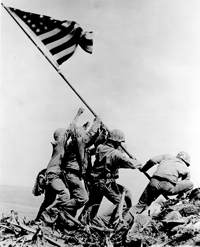
“…American Indians have proudly worn our nation’s uniform in every one of our conflicts…American Indians per capita – have had the highest percentage of their people in military service, exceeding every American ethnic group.”
Ben Nighthorse Campbell
Former U.S. Senator, Col
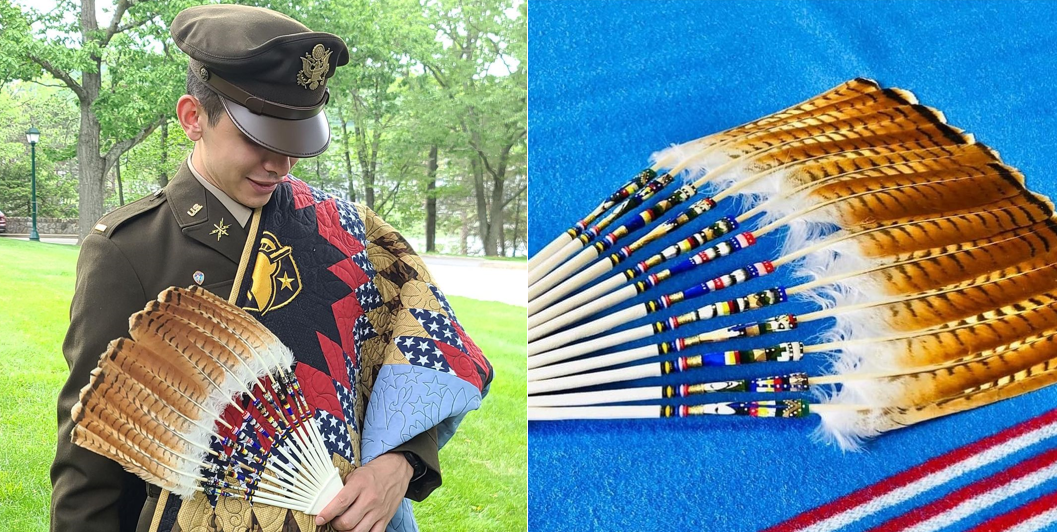
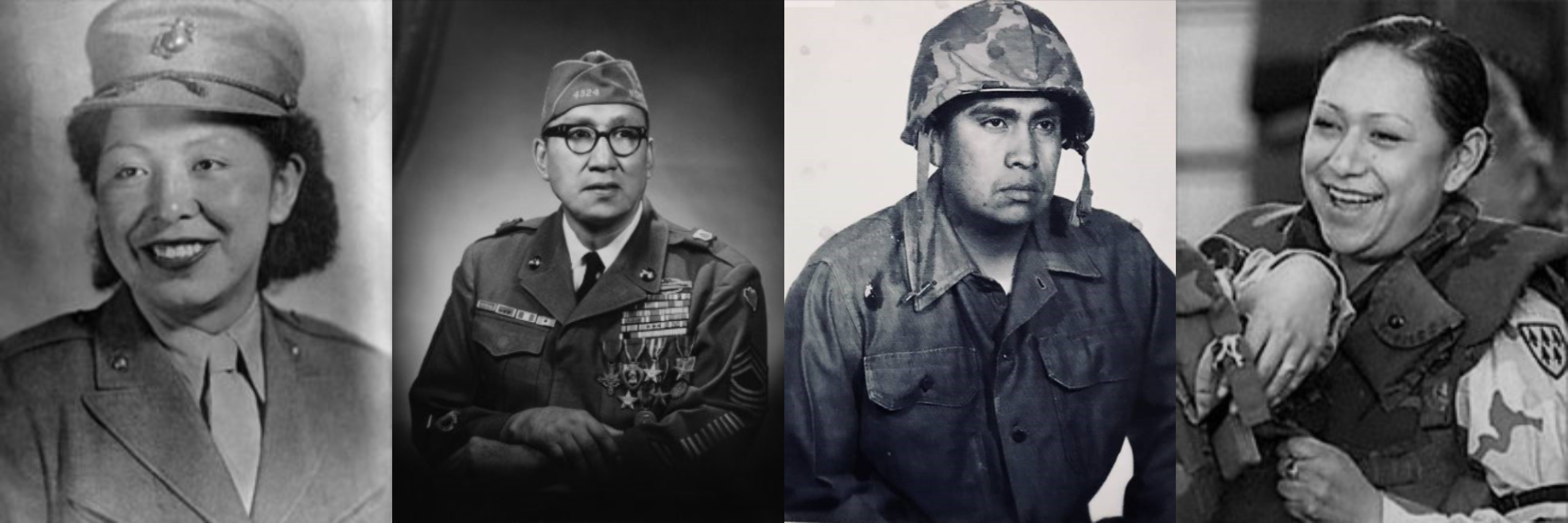
Honoring Service
Medal of Honor
The Medal of Honor is the highest award for valor in action against an enemy force which can be bestowed on an individual serving in the armed forces of the United States. This award is generally presented to its recipient by the President of the United States on behalf of Congress.
List of Native American / Alaska Native Medal of Honor Recipients
Highlights of Service
Ira Hayes – Iwo Jima Flag Raiser
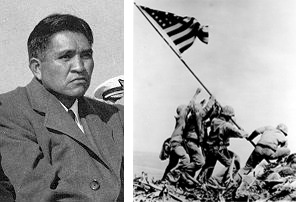
On Feb. 23, 1945 to signal the end of Japanese control, Ira Hayes and five other’s raised the U. S. flag atop Mount Suribuchi on the island of Iwo Jima. Three of the six men were killed while raising the flag. This heroic act was photographed by Joe Rosenthal, and it transformed Ira Hayes’ life forever. Hayes was a full blood Pima Indian and is buried in Arlington Cemetery.
Early Wars (before World War I)
World War I
World War II
Navajo Code Talkers
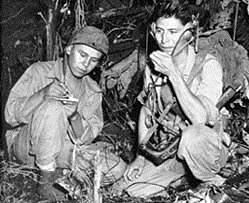
Cpl. Henry Bake, Jr., and Pfc. George H. Kirk, Navajos serving in December 1943 with a Marine Corps signal unit, operate a portable radio set in a clearing that they have hacked in the dense jungle close behind the front lines. Photo courtesy of www.archives.gov.
The idea to use Navajo for secure communications came from Philip Johnston, the son of a missionary to the Navajos and one of the few non-Navajos who spoke their language fluently. Johnston, reared on the Navajo reservation, was a World War I veteran who knew of the military’s search for a code that would withstand all attempts to decipher it. He also knew that Native American languages notably Choctaw had been used in World War I to encode messages.
Korean Conflict
Vietnam Era
Post-Vietnam Era
Articles and Reports of Interest
Native American Women Veterans
Very little is known about the contributions of Native American women to the United States military. The Women In Military Service For America Memorial Foundation is attempting to fill this gap by encouraging Native American women veterans to register with the Memorial so that their stories may be recorded and preserved. They are also conducting research on the contributions of Native American women of earlier eras.
National Native American Veterans Memorial
Taking up the charge given by Congress, the Smithsonian’s National Museum of the American Indian has established a National Native American Veterans Memorial on the grounds of the museum on the National Mall in Washington, D.C. Opened to the public on Veterans Day 2020, this tribute to Native heroes recognizes for the first time on a national scale the enduring and distinguished service of Native Americans in every branch of the U.S. military.
Why We Serve – Smithsonian Exhibition
Why We Serve honors the generations of Native Americans who have served in the armed forces of the United States – often in extraordinary numbers – since the American Revolution. Native people have served for the same reasons as anyone else: to demonstrate patriotism or pursue employment, education, or adventure. Many were drafted. Yet tribal warrior traditions, treaty commitments with the United States, and responsibility for defending Native homelands have also inspired the enduring legacy of Indigenous military service.
Native Words, Native Warriors – Smithsonian Exhibition
When the United States issued the call to arms in World Wars I and II, American Indians answered as warriors. Some men discovered that words—in their Native languages—would be their most valued weapons. Crackling over the airwaves and telephone lines, the code talkers’ messages proved indecipherable to the enemy and helped the United States achieve victory in combat. Decades later, the U.S. government declassified the code talker programs, paving the way for the participants’ long-overdue recognition.
Native Words, Native Warriors tells the remarkable story of Indian soldiers from more than a dozen tribes who used their Native languages in the service of the U.S. military. Developed with the Smithsonian’s National Museum of the American Indian, this inspiring exhibition was made possible in part thanks to the generous support of Elizabeth Hunter Solomon. Additional support has been provided by the Smithsonian Women’s Committee and the AMB Foundation.
CSPAN: History of Native American Service (Dec. 2, 2011)
A panel was held on the history of military service by Native Americans since the American Revolution, featuring American Indians who served in the armed forces during World War II, Korea, Vietnam, and Iraq. Mr.Emhoolah gave an opening prayer. Herman Viola gave a PowerPoint presentation based on his book Warriors in Uniform: The Legacy of American Indian Heroism. Slides were also shown during other presentations, some of which included drumming and singing. Chuck Boers presented the museum with a plaque of feathers he carried in the battle of Fallujah, Iraq. Jason Giles moderated. “Our Warrior Spirit: Native Americans in the U.S. Military” was held in the Rasmuson Theater of the National Museum of the American Indian. (2 Hours, 4 minutes)

